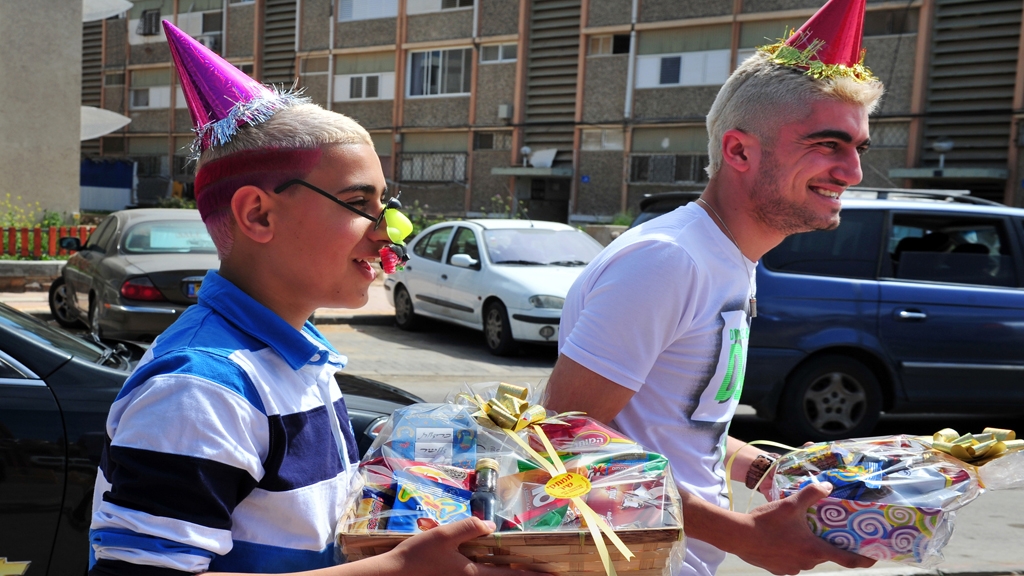The ninth chapter of the Book of Esther states (verse 19): “Therefore the Jews of the villages, that dwelt in the unwalled towns, made the 14th day of the month of Adar a day of gladness and feasting, a holiday, and of sending portions to one another (mishloach manot).”
From this historical event our rabbis teach that the Jewish people must send gifts of food to each other on the holiday of Purim. However, the question arises: What is the ultimate purpose of these gifts?
Countering the Accusations of Haman
One approach sees the mitzvah [commandment] of mishloach manot as counteracting the accusations of Haman. Haman accused the Jews of being “a scattered, and divided nation.” Thus, the Jewish people send gifts to each other in order to show that they are not divided, but rather are united. (Following this mitzvah can be understood as a positive reinterpretation of midah ke-neged midah — measure for measure.) The mishloach manot bring peace and harmony to an at times divisive and fractured Jewish community.
This explains why some maintain that one may fulfill the mitzvah of mishloach manot by sending not food, but words of Torah. Since the purpose of this mitzvah is to unite the Jewish people, one can fulfill the mitzvah with anything that achieves this goal. And what better method is there of achieving harmony amongst fellow Jews than by sharing words of Torah? (See Rabbi Yonah Metzger, Mi-Yam Ha-Halakhah, sec. 113.)
With your help, My Jewish Learning can provide endless opportunities for learning, connection and discovery.
Ensuring Everyone Has a Festive Meal
A second explanation for the mitzvah appears in the Terumat Ha-Deshen (sec. 111) of Rabbi Israel Isserlein (15th century, Vienna), who writes: “It appears that the reason for this mitzvah is so that everyone can fulfill the mitzvah of eating a proper, festive meal on Purim.” In other words, the mitzvah intends to guarantee that rich and poor alike are provided for at the Purim meal. (It may also be taken as a symbol that both Jewish rich and poor. should recognize the universal aspect of redemption from the physical extinction of the entire nation).
This second approach raises another question. Indeed, there is already another mitzvah that assures that the poor are provided for on Purim, i.e. the mitzvah of mattanot le-evyonim (sending gifts to the poor). Why, then, is there a need for a second mitzvah of mishloach manot? So some suggest that the mitzvah of mishloach manot actually derives from the mitzvah of giving gifts to the poor on Purim. However, due to concern that the poor would feel ashamed that only they did not have sufficient means to provide for the Purim meal, the rabbis decreed that not only the poor, but all people should send and receive gifts on the holiday of Purim.
Thus, we see that the mitzvah of mishloach manot has two main functions — to instill harmony and love in the Jewish people, and to remind ourselves that as we celebrate the holiday of Purim, we can not forget about the needs of the less fortunate in our community.
Reprinted with permission of the author, whose website can be visited at www.rabbishmuel.com.
Adar
Pronounced: uh-DAHR, Origin: Hebrew, Jewish month usually coinciding with February-March.
mishloach manot
Pronounced: meesh-LOE-akh mah-NOTE, Origin: Hebrew, literally “sending portions to one another.” A phrase taken from the Megillah [Book of Esther] that commands the Jewish community to give small packages of food or gifts to friends on the day of Purim.
mitzvah
Pronounced: MITZ-vuh or meetz-VAH, Origin: Hebrew, commandment, also used to mean good deed.
Purim
Pronounced: PUR-im, the Feast of Lots, Origin: Hebrew, a joyous holiday that recounts the saving of the Jews from a threatened massacre during the Persian period.



